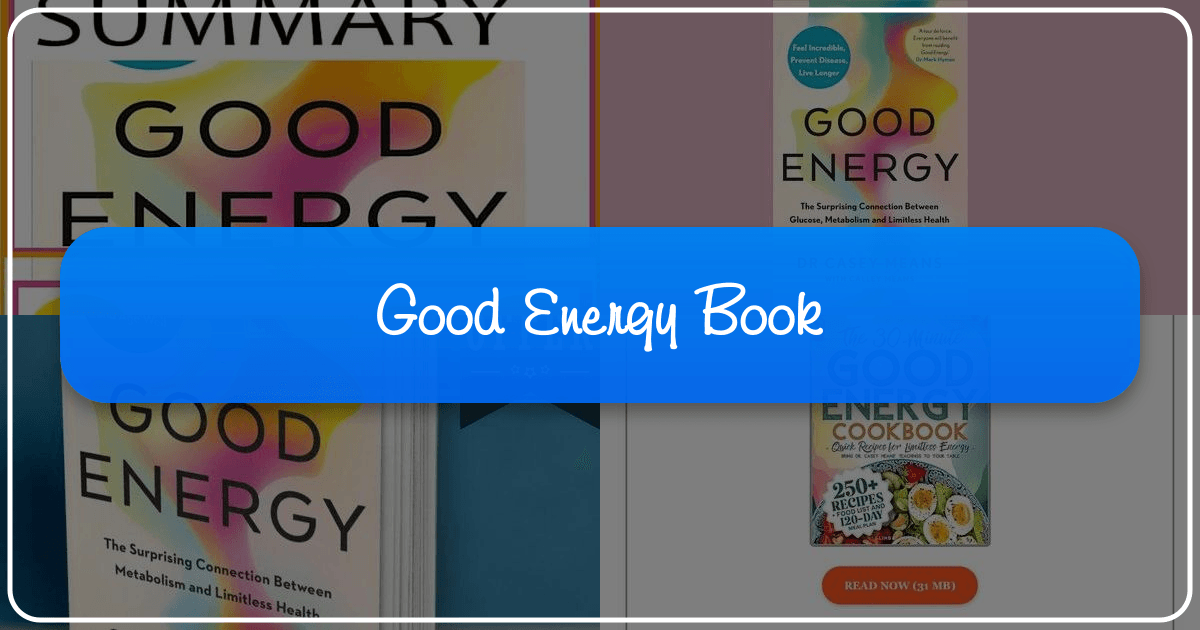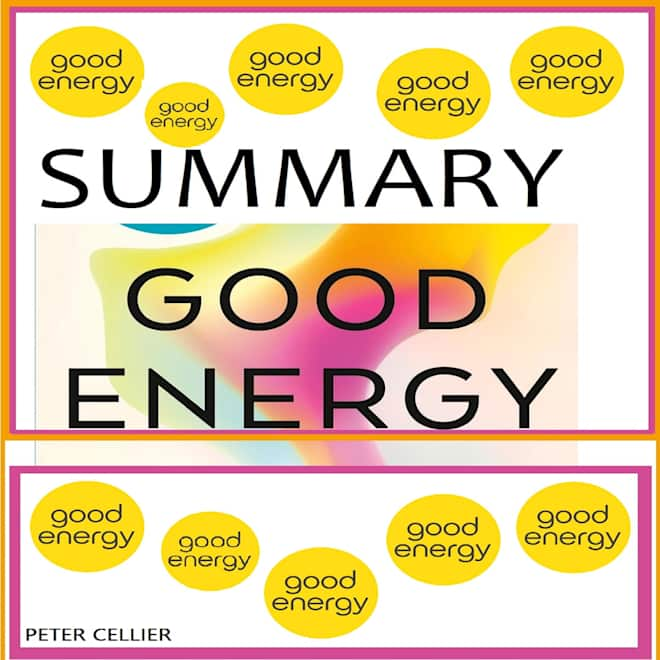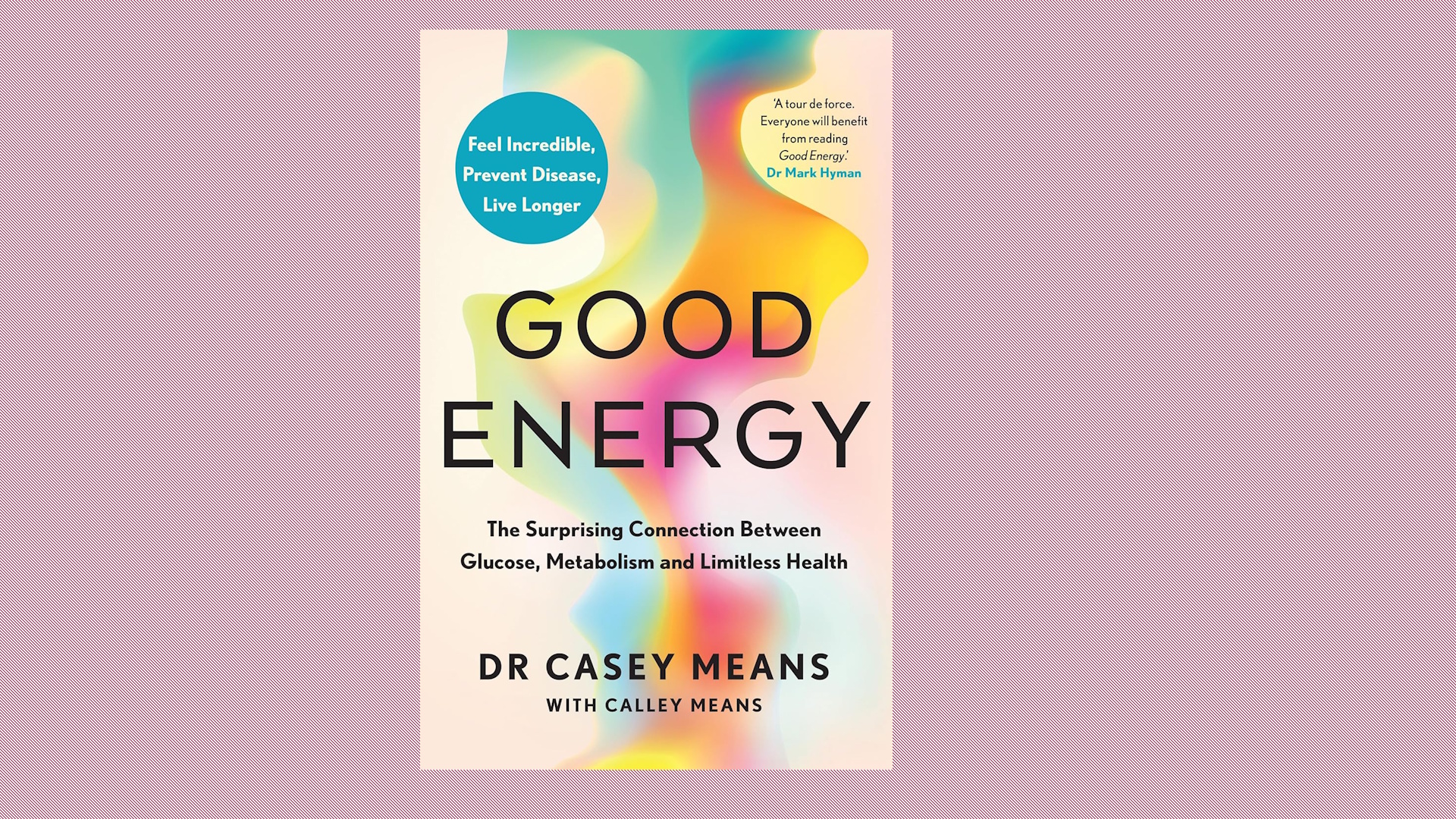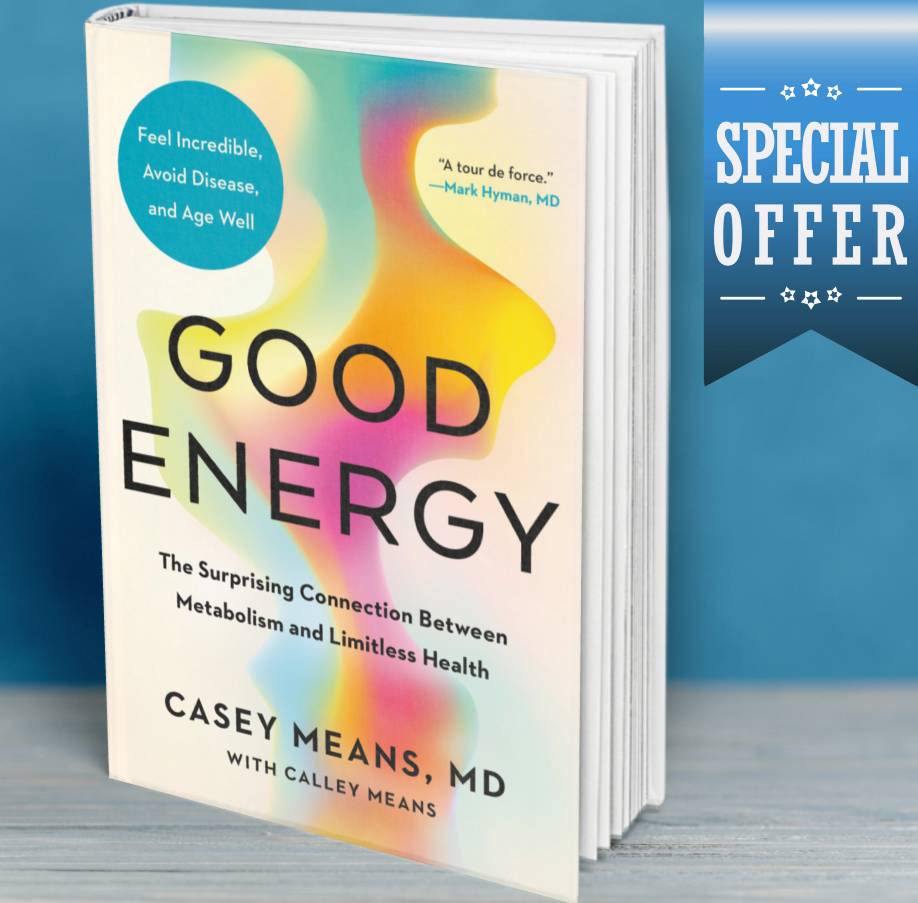Good Energy: A Deep Dive into the Book and its Impact

The book “Good Energy: The Surprising Connection Between Metabolism and Limitless Health,” by Dr. Casey Means, has sparked significant interest in the realm of health and wellness. This in-depth exploration delves into the core concepts presented in the book, its reception, and its wider cultural impact across various platforms. We will examine the book’s content, its author’s background, the implications for reading and learning, its presence in libraries, and its overall cultural influence.

The Book: A Comprehensive Guide to Metabolic Health
“Good Energy” isn’t just another diet book; it’s a comprehensive guide to understanding and optimizing metabolic health. The book’s main argument centers on the idea that many chronic diseases and debilitating symptoms stem from metabolic dysfunction – the inefficient production and use of energy at the cellular level. Dr. Means argues that this dysfunction, rather than isolated organ or system failure, is often the root cause of various seemingly unrelated health issues, ranging from common ailments like migraines and acne to more severe conditions such as heart disease, cancer, and Alzheimer’s.
Genres and Classification

The book can be classified under several genres: primarily, it falls under Health & Wellness and Nutrition. However, its exploration of the interconnectedness of physical and mental well-being also places it within the Self-Help and potentially even Holistic Health genres. The detailed scientific explanations and the author’s medical background elevate it above typical self-help books, introducing a level of Medical Science explanation accessible to a lay audience.
Critical Reception and Sales Performance

The book has received widespread acclaim since its release, achieving the status of a #1 New York Times Bestseller. Amazon reviews consistently rate it highly (4.6 out of 5 stars), with over 4,539 ratings reflecting positive user experiences. Furthermore, Goodreads, another prominent book review platform, shows a similarly high rating (4.1 out of 5 stars) based on 21,634 ratings, showcasing its considerable popularity within relevant communities. This strong reception translates to substantial sales figures, with over one million copies sold, indicating a large and engaged readership. These sales numbers solidify the book’s position as a bestseller and a significant work within the health and wellness literature.
The Author: Dr. Casey Means and her Expertise
Dr. Casey Means’s credentials significantly add to the book’s credibility. She is not just an author; she’s a medical professional with a strong background in functional medicine and technology. Her experience as an ENT surgeon at Oregon Health and Science University, coupled with her later work in functional medicine and as the Chief Medical Officer and co-founder of Levels (a health technology company), provides a unique perspective. This experience allows her to bridge the gap between conventional medical practices and the holistic approaches she advocates in “Good Energy.” The collaboration with her brother, Calley Means (co-founder of TrueMed and advocate for policy changes in health incentives), expands the scope of the book to include the economic and political aspects of healthcare systems and their impact on population health.
Writing Style and Approach
Dr. Means’ writing style is notable for its ability to make complex scientific concepts easily understandable to a non-medical audience. She uses relatable analogies and personal anecdotes to illustrate her points, making the scientific information more engaging and accessible. Her approach moves beyond simply presenting information, offering actionable advice and a four-week plan to guide readers in improving their metabolic health. This blend of scientific rigor and practical application contributes to the book’s overall appeal and effectiveness.
Inspirations and Influences
Dr. Means’ inspiration for the book stems from her years of experience treating patients and her own personal journey. Disillusioned by the limitations of the conventional healthcare system in addressing chronic illness, she sought a deeper understanding of the root causes of disease. Her background in functional medicine, a field focusing on the body’s systems rather than individual parts, significantly shaped her perspective. Furthermore, the insights derived from the substantial dataset generated by Levels undoubtedly influenced the book’s contents, methodology, and evidence-base.
Reading and Learning: Key Takeaways from “Good Energy”
“Good Energy” provides more than just information; it offers practical knowledge and life lessons that readers can apply to their lives.
Summaries of Key Concepts
The book’s central theme revolves around understanding metabolic health and its connection to various health conditions. Dr. Means emphasizes that achieving optimal cellular energy (“good energy”) is fundamental to overall well-being. The book outlines specific biomarkers indicative of potential health risks, including methods to measure and track them using both affordable tools and advanced technologies. It advocates for a shift away from confusing dietary philosophies toward practical, individualistic principles applicable to all dietary patterns, emphasizing whole-food approaches and nutrient optimization. Beyond nutrition, the book also explores the importance of sleep, circadian rhythm, targeted exercise, temperature exposure, and toxin reduction in promoting metabolic health.
Educational Value and Life Lessons
The book’s educational value lies in its clarity and practicality. It provides a deeper, more holistic understanding of health and disease, going beyond the isolated treatment of symptoms. Readers learn to approach health challenges from a cellular perspective, understanding the importance of providing cells with the necessary resources to function optimally. This approach empowers individuals to take proactive steps towards maintaining their well-being, fostering personal responsibility for health. Life lessons encompassed within the book include the value of self-awareness (monitoring biomarkers, understanding individual responses), long-term thinking (preventative health is paramount), and the necessity of moving beyond restrictive diet dogmas for sustainable health improvements.
Libraries and Accessibility: Where to Find “Good Energy”
“Good Energy” is readily available in various libraries and formats.
Public and Digital Libraries
Given its popularity and relevance, the book is likely held by many public libraries across the country. Similarly, many digital libraries offer access to the e-book format, broadening its accessibility.
Rare Collections and Archives
While not yet a classic, its potential for long-term significance in the health and wellness field suggests its inclusion in relevant archives and rare book collections in the future. As a contemporary bestseller influencing health trends, its future position in these collections is worthy of consideration.
Cultural Impact and Influence: A Paradigm Shift in Health
“Good Energy” has a notable cultural impact beyond individual readers, prompting changes in how individuals and the industry view metabolic health.
Literary Influence and Adaptations
The book’s success has elevated the topic of metabolic health into mainstream discussion. Its accessible style has opened avenues for deeper conversations about the root causes of disease, influencing both popular and professional discussions. Its potential for adaptations (such as documentaries or TV series) highlights its importance as a potential trigger for a paradigm shift in health awareness and policy discussions.
Awards and Recognition
The book’s status as a New York Times Bestseller serves as a significant form of recognition, underscoring its widespread appeal. Further awards or distinctions in related fields (health and wellness writing, for example) could increase the book’s cultural significance.
Communities and Discussions
The book has fostered online and offline communities dedicated to discussing its concepts and practical applications. This communal engagement surrounding metabolic health and the book’s specific guidance indicates its sustained influence and positive impact on its readership.
In conclusion, “Good Energy” transcends the typical self-help or diet book, offering a comprehensive, scientifically grounded, and actionable guide to achieving optimal metabolic health. Its widespread popularity, positive reception, and the author’s unique expertise solidify its position as a significant contribution to health and wellness literature, with the potential to influence healthcare practices and broader cultural conversations about health for years to come.